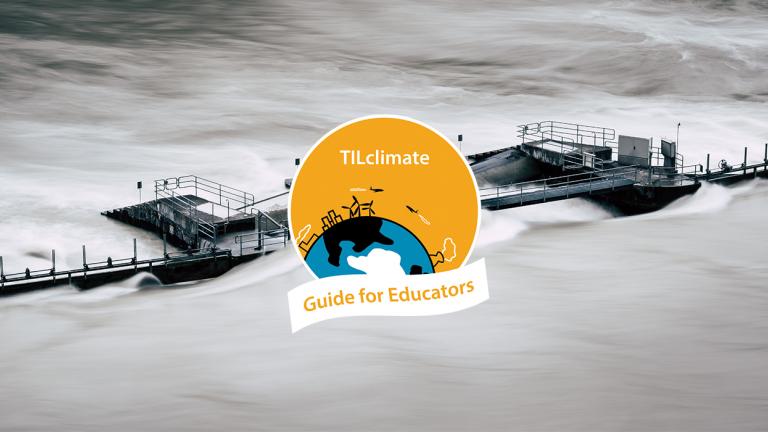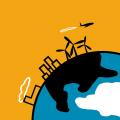
This Guide for Educators was developed by the MIT Environmental Solutions Initiative as an extension of our TILclimate (Today I Learned: Climate) podcast, to make it easier for you to teach climate change, earth science, and energy topics in the classroom. It is an extension of the TILclimate episode "TIL about sea level rise, part 2."
Browse all TILclimate guides for educators.
Description
Following up on the demonstrations in Today I Learned About Sea Level Rise, Part 1, Dive Deeper assignments lead students to explore data related to the impacts of thermal expansion, land ice melt, storm surge, and high-tide flooding. Teams of students each learn about these topics and bring their learning together in a jigsaw.
SWBAT:
-
Understand that the burning of fossil fuels is causing a buildup of heat-trapping gases, which is warming the atmosphere and ocean.
-
Explain that melting land ice adds to rising seas, while melting sea ice does not.
-
Explain that warm water molecules expand, taking up more space.
-
Discuss the impacts of sea level rise on the effects of storm surge.
-
Explain the concept of high-tide or ‘sunny day’ flooding.
-
Investigate solutions for sea level rise.
Skills:
-
Observation
-
Interactive online models
-
Graphing
-
Communication
Standards:
-
HS-ESS2-2: Analyze geoscience data to make the claim that one change to Earth’s surface can create feedbacks that cause changes to other Earth systems
-
HS-ESS2-4: Use a model to describe how variations in the flow of energy into and out of Earth’s systems result in changes
-
CCSS.ELA-LITERACY.RI Informational Texts
-
CCSS.ELA-LITERACY.RST Science and Technical Subjects
-
CCSS.ELA-LITERACY.RH History/Social Studies
-
CCSS.ELA-LITERACY.SL Speaking & Listening
Disciplinary core ideas:
-
ESS2.A: Earth Materials and Systems
-
ESS2.D: Weather and Climate
-
ESS3.B: Natural Hazards
-
ESS3.C: Human Impacts on Earth Systems
-
ESS3.D: Global Climate Change
What is included in this Educator Guide
- How to use TILclimate Educator Guides (Download)
- Full Educator Guide (Download)
- Includes both Teacher and Student pages
- Includes both Teacher and Student pages
- Teacher pages (Download)
- Includes materials, discussion questions, background resources, and adaptation suggestions for science, social science, and ELA teachers
- Includes materials, discussion questions, background resources, and adaptation suggestions for science, social science, and ELA teachers
- Student pages (Download)
-
Readings & Investigations: Land Ice Melt, Thermal Expansion, Storm Surge, High-Tide Flooding
-
Jigsaw share discussion
-
Case Studies: Engineering solutions
-
Discussion: Solutions
-
Listen to the episode


